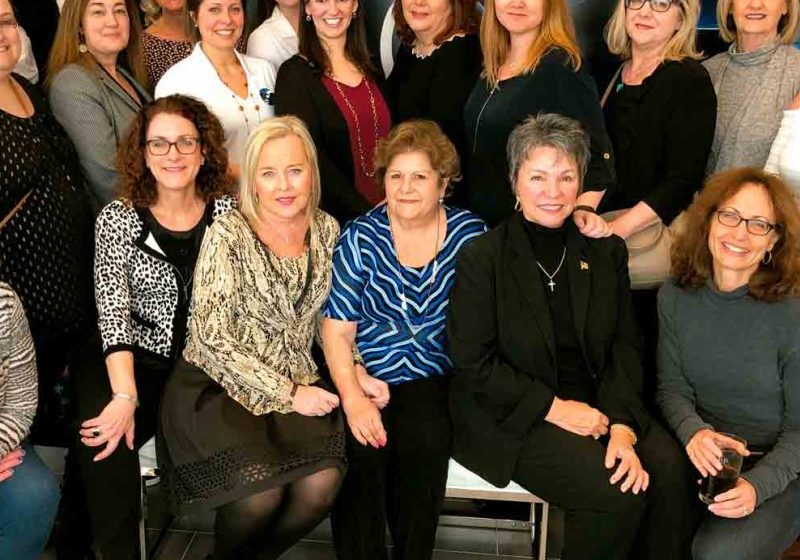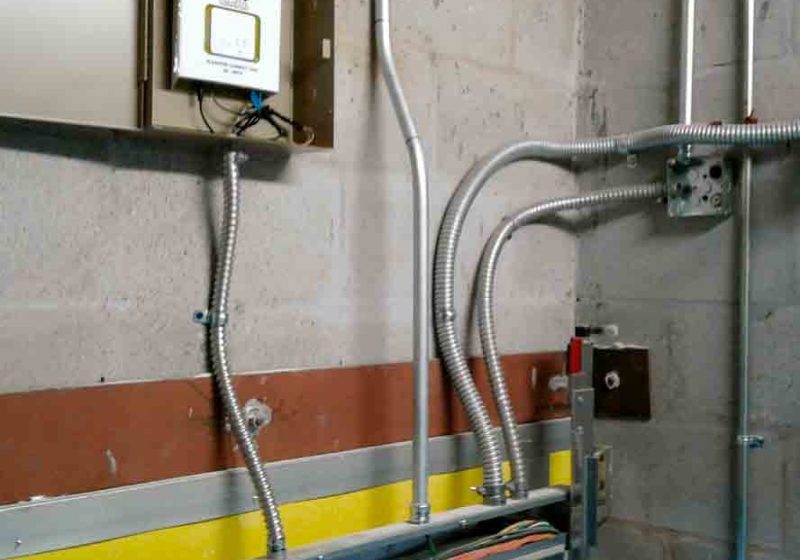The Future of Elevator Communications
Jul 1, 2018

Solutions for elevator communication systems in the face of the elimination of landlines
The phone inside the elevator cab is, quite possibly, the last item that comes to mind when thinking of elevators in a building — that is, until the elevator falters, and the elevator phone is the only reliable means of summoning help (or, in the case of inspection for code compliance). Whether for the team responsible for servicing the elevator or the building manager, the topic is likely forced to the back of the mind as something they would rather not hassle with altogether, and understandably so. However, the anticipated elimination of landlines makes elevator phones and their underlying service a priority.
It should come as no surprise that a trend in the communications space is the elimination of analog telephone lines, also known as plain old telephone service (POTS). While this has been an ongoing conversation for some time, there has been much in the news in the last year of telecom giants supporting legislation that would eliminate a requirement for them to offer landline voice service. While not exactly newsworthy in the consumer space (where many of us ditched landlines long ago), commercial buildings continue to be much more reliant on landline service — in many cases, with a dedicated landline for each elevator cab.
What does the timeline look like? While this is expected to take some time, CBS reported in June 2017 that 20 of the 21 U.S. states with AT&T as the primary carrier voted to eliminate regulations that require telecom providers to keep POTS in place. This includes Alabama, Arkansas, Florida, Georgia, Illinois, Indiana, Kansas, Kentucky, Louisiana, Michigan, Mississippi, Missouri, Nevada, North Carolina, Ohio, Oklahoma, South Carolina, Tennessee, Texas and Wisconsin. Phone companies are waiting for the Federal Communications Commission to give its blessing before doing away with landlines completely, even in states that have deregulated. However, beginning in fall 2017, these utility providers had already begun to eliminate many of the existing residential voice offers. Why does this matter? A bulk of the pushback on this legislation to date has been centered in the consumer residential space. Eliminating these legacy low-cost residential packages is meant to move the consumer needle naturally prior to the provider eliminating landlines altogether. It is only a matter of time before landlines will cease to exist.
For your commercial customers not already futureproofing their communication systems, now is the time to do so. Like you, elevator phones are not top of mind for building operators, and they will need help navigating that transition, ensuring the solution is code compliant and reliable. Those relying on landline-based systems should start exploring alternative options now to guarantee service coverage without interruption. While a telephone utility restructure may be on their radar, it is unlikely the emergency phone lines used in their elevator cabs is at the forefront of their mind.
Solutions
The good news is that landline service, while reliable, is not the only solution and is far from perfect, especially when it comes to time to connect.
While commercial customers are adopting voice over Internet Protocol (VoIP) as their business connectivity solution, it can be problematic for elevator phone use because of specific code requirements. This includes the requirement for ensuring dial-tone availability and the ability of the answering party to call back in to the cab in the event of a disconnection. The requirement for 24/7 monitoring will often mean you have a third party involved. If on VoIP, that third party may need to have access to your customer’s network. This is not easy to ask of a commercial customer’s information-technology team. Outside of internal comfort levels, with outside access to their network, relying on the availability of internet service for critical building emergency communications is not recommended. Thus, emergency lines do not typically fit the bill under a VoIP solution.
Connecting through the cellular network is the viable solution for elevators but only if the system is customized for emergency use. For American Society of Mechanical Engineers (ASME) code compliance, the phone service must allow the monitoring party to identify the caller’s location down to the elevator cab number without aid from the caller. An elevator phone relying on cellular connectivity should have a direct connection to power, include a battery for code-required backup power and be a two-piece solution allowing the cellular component to be located outside the elevator shaft for reliable connection to the cellular network. Time to connect is another consideration, both in technology related to connecting the call (cellular wins the speed race) and capacity of the monitoring center to quickly receive and respond to the call. This includes overwhelmed third-party call centers and 911. Speed is a factor in emergency situations for obvious reasons relating to life safety, but it is also a factor in passenger experience, a top concern for every building owner and manager.
Whether a landline or an alternate solution, all existing compliance standards apply. Evaluate these new solutions with standard testing practices in mind.
Elevator Phone Testing Procedure
This test requires two people. You may take the elevators out of service during the test, but it is not necessary.
Step One: Each tester should enter a different elevator and activate the emergency phone. (The two phones should be in use simultaneously.) If the phones meet code, both testers will be talking to an emergency operator. The testers may hear each other, as well, but both must have reached an outside number and be able to carry on a two-way conversation with the emergency operator. Remember, both phones should be activated at approximately the same time and, ultimately, online simultaneously. If anything other than what is described above happens (i.e., only one call goes through; no calls go through but you can talk to each other; one call connects but is disconnected when the second phone is activated; the phones will not dial out; or the calls are completed, but the two parties cannot hear each other), your phones do not comply with ASME A17.1.
Step Two: Ask the operator if they can identify your location. For Americans With Disabilities Act (ADA) compliance, the most important requirement is that the emergency operator answering the call must be able to determine the exact location of the caller without the caller telling them. If the operator cannot, the phones are not ADA compliant.
Step Three: Call the number associated with the elevator phone and see what happens. If the phones in the elevators do not ring, you are not ADA compliant. ADA requires that you be able to call back to the elevator directly, without going through a switchboard or an automated attendant. If you do not know the numbers for your elevators, simply ask the operator if they caught your caller ID and to read it back to you. Then, you will be able to call those numbers from your office or a cell phone.
Conclusion
One thing is clear — landlines are going away, and building owners and property managers will need a solution for their elevator communication systems. Now is the time to evaluate an alternate solution to remain code compliant, while ensuring a seamless transition without downtime. Each of our elevator customers looks to us to guide them, and their passengers look to us to provide a reliable means of summoning help. Let’s make sure we’re prepared to do both as we navigate the changing communications landscape.
References
[1] Inverse. “Landlines Will Disappear Before 2030 Because Economics” (www.inverse.com/article/9682-landlines-will-disappear-before-2030-because-economics).
[2] Compu VoIP. “The End of the PSTN” (www.compuvoip.com/end-pstn-conclusion).
[3] MoneyTalksNews. “Landline Phones Disappearing in These 20 States” (www.moneytalksnews.com/landline-phone-disappearing-in-these-20-states).
[4] CBS Evening News. “Could This Be the End of the Line for the Old-Fashioned Telephone Call?”(www.cbsnews.com/news/could-this-be-the-end-of-the-line-for-the-old-fashioned-telephone-calls)
Get more of Elevator World. Sign up for our free e-newsletter.









